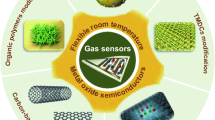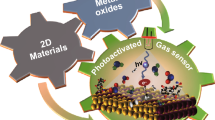Abstract
The current demand in the automobile industry is in the control of air-fuel mixture in the combustion engine of automobiles. Oxygen partial pressure can be used as an input parameter for regulating or controlling systems in order to optimize the combustion process. Our goal is to identify and optimize the material system that would potentially function as the active sensing material for such a device that monitors oxygen partial pressure in these systems. We have used thin film samaria doped ceria (SDC) as the sensing material for the sensor operation, exploiting the fact that at high temperatures, oxygen vacancies generated due to samarium doping act as conducting medium for oxygen ions which hop through the vacancies from one side to the other contributing to an electrical signal. We have recently established that 6 atom % Sm doping in ceria films has optimum conductivity. Based on this observation, we have studied the variation in the overall conductivity of 6 atom % samaria doped ceria thin films as a function of thickness in the range of 50 nm to 300 nm at a fixed bias voltage of 2 volts. A direct proportionality in the increase in the overall conductivity is observed with the increase in sensing film thickness. For a range of oxygen pressure values from 0.001 Torr to 100 Torr, a tolerable hysteresis error, good dynamic response and a response time of less than 10 seconds was observed.
Similar content being viewed by others
References
R. Ionescu A. Hoel C. G. Granqvist E. Llobet and P. Heszler Sensors and Actuators B: Chemical 104 (1), 124–131 (2005).
L. Francioso D. S. Presicce A. M. Taurino R. Rella P. Siciliano and A. Ficarella Sensors and Actuators B: Chemical 95 (1-3), 66–72 (2003).
A. Mehta S. Patil H. Bang H. J. Cho and S. Seal Sensors and Actuators A: Physical 134 (1), 146–151 (2007).
M. Ogita S. Yuasa K. Kobayashi Y. Yamada Y. Nakanishi and Y. Hatanaka Applied Surface Science 212-213, 397–401 (2003).
T. Takeuchi Sensors and Actuators 14 (2), 109–124 (1988).
A. Lari A. Khodadadi and Y. Mortazavi Sensors and Actuators B: Chemical 139 (2), 361–368 (2009).
W. C. Maskell Journal of Physics E: Scientific Instruments 20 (10), 1156–1168 (1987).
G. Balducci M. S. Islam J. Kaspar P. Fornasiero and M. Graziani Chemistry of Materials 12 (3), 677–681 (2000).
E. Mamontov T. Egami R. Brezny M. Koranne and S. Tyagi The Journal of Physical Chemistry B 104 (47), 11110–11116 (2000).
M. Ozawa M. Kimura and A. Isogai Journal of Alloys and Compounds 193 (1-2), 73–75 (1993).
M. Benammar Measurement Science and Technology 5 (7), 757–767 (1994).
H. Dietz Solid State Ionics 6 (2), 175–183 (1982).
W. Weppner Materials Science and Engineering: B 15 (1), 48–55 (1992).
K. Saji H. Kondo H. Takahashi H. Futata K. Angata and T. Suzuki Sensors and Actuators B: Chemical 14 (1-3), 695–696 (1993).
D. Pribat and G. Velasco Sensors and Actuators 13 (2), 173–194 (1988).
R. Moos W. Menesklou H.-J. Schreiner and K. H. Härdtl, Sensors and Actuators B: Chemical 67 (1-2), 178–183 (2000).
J. C. Hsieh C. J. Liu and Y. H. Ju Thin Solid Films 322 (1-2), 98–103 (1998).
J. F. Chang H. H. Kuo I. C. Leu and M. H. Hon Sensors and Actuators B: Chemical 84 (2-3), 258–264 (2002).
H.-Y. Wang and J. B. Lando Langmuir 10 (3), 790–796 (2002).
G. Korotcenkov M. Ivanov I. Blinov and J. R. Stetter Thin Solid Films 515 (7-8), 3987–3996 (2007).
R. K. Sharma and M. C. Bhatnagar Sensors and Actuators B: Chemical 56 (3), 215–219 (1999).
Author information
Authors and Affiliations
Rights and permissions
About this article
Cite this article
Rahul, P.S., Nandasiri, M., Kuchibhatla, S. et al. Performance Evaluation of an Oxygen Sensor as a Function of the Samaria Doped Ceria Film Thickness. MRS Online Proceedings Library 1209, 307 (2009). https://doi.org/10.1557/PROC-1209-P03-07
Received:
Accepted:
Published:
DOI: https://doi.org/10.1557/PROC-1209-P03-07




